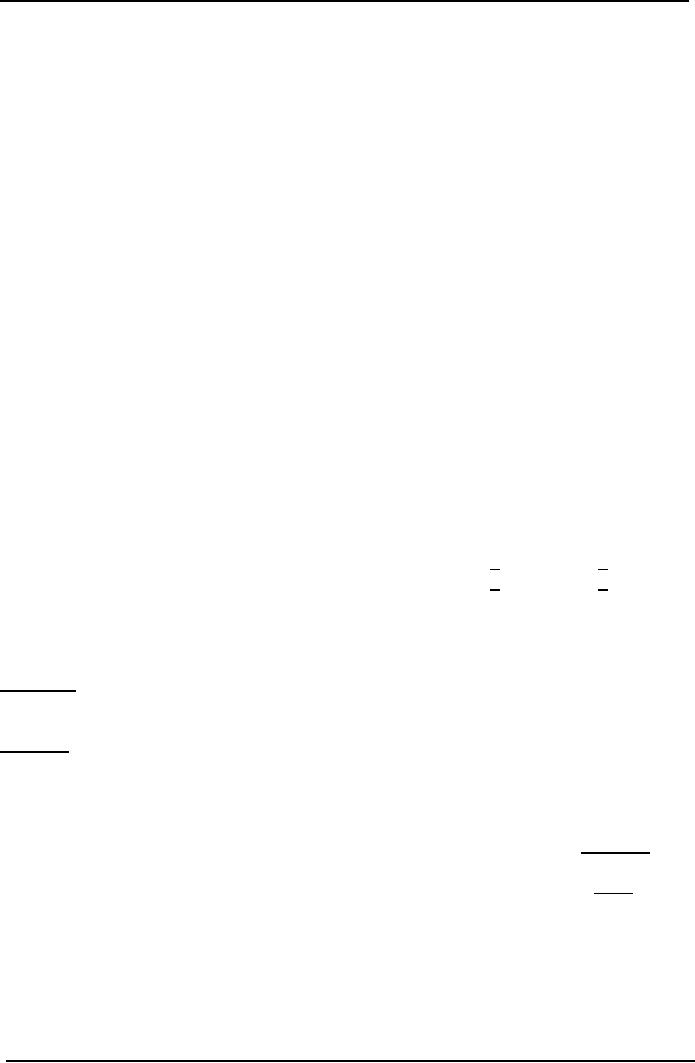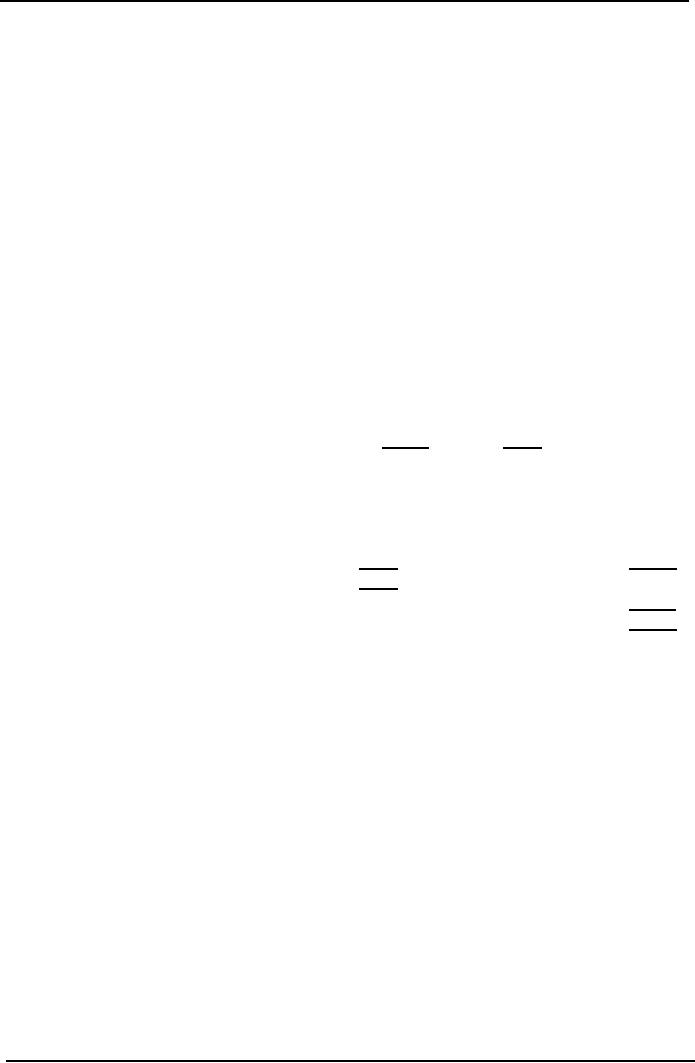 |

Cost
& Management Accounting
(MGT-402)
VU
LESSON
# 44 & 45
DECISION
MAKING
CHOICE
OF PRODUCT (PRODUCT MIX)
DECISIONS
Introduction
One
of the more common decision-making
problems is a situation where there are
not enough
resources
to meet the potential sales
demand, and so a decision
has to be made about what
mix of
products
to produce, using what resources there
are as effectively as
possible.
A
limiting factor could be
sales if there is a limit to sales
demand but any one of the
organization's
resources
(labor, materials and so on)
may be insufficient to meet
the level of
production
demanded.
It is assumed in limiting factor
accounting that management
wishes to maximize
profit
and
that profit will be maximized
when contribution is maximized (given no
change in fixed cost
expenditure
incurred). In other words, marginal
costing ideas are
applied.
Contribution
will be maximized by earning
the biggest possible
contribution from each unit
of
limiting
factor. For example if grade
A labor is the limiting
factor, contribution will e maximized
by
earning
the biggest contribution
from each hour of grade A
labor worked.
The
limiting factor decision
therefore invoices the determination of
the contribution earned
by
each
different product from each
unit of the limiting
factor.
Example:
Limiting Factor
AB
Ltd makes two products,
the Ay and the Be.
Unit variable costs are as
follows.
Ay
Be
Rs.
Rs.
Direct
Materials
1
3
Direct
Labor (Rs. 3 per
hour)
6
3
1
Variable
Overhead
1
8
7
The
sales price per unit is
Rs. 14 per Ay and Rs. 11
per Be. During July 20X2
the available direct
labor
is limited to 8,000 hours.
Sales demand in July is
expected to be 3,000 units
for Ays and
5,000
units
for Bes.
Required:
Determine
the profit-maximizing production
mix, assuming that monthly
fixed costs are
Rs.
20,000,
and that opening stocks of
finished goods and work in
progress are nil.
Solution:
Step
1.
Confirm that the limiting
factor is something other
than sales demand.
Ays
Bes
Total
Labor
hours per unit
2hrs
1hr
Sales
demand
3,000
units
5,000
units 8,000hrs
Labor
hours needed
6,000
hrs
5,000
hrs
11,000hrs
Labor
hours available
Shortfall
3,000hrs
Labor
is the limiting factor on
production.
Step
2. Identify
the contribution earned by
each product per unit of
limiting factor that
is
per
labor hour worked.
241

Cost
& Management Accounting
(MGT-402)
VU
Ays
Bes
Rs.
Rs.
Sales
price
14
11
Variable
Cost
8
7
Unit
contribution
6
4
Labor
hours per unit
2
hrs
1
hrs
Contribution
per labor hour (=unit of
limiting factor)
Rs.
3
Rs.
4
Although
Ays have a higher unit
contribution than Bes, two
Bes can be made in the
time it takes to
make
one Ay. Because labor is in
short supply it is more
profitable to make Bes than
Ays.
Step
3. Determine
the optimum production plan.
Sufficient Bes will be made
ot meet the full
sales
demand,
and the remaining labor
hours available will then be
used to make Ays.
(a).
Hours
Hours
Priority
of
Product
Demand
required
available
manufacture
1st
Bes
5,000
5,000
5,000
2nd
Ays
3,000
6,000
3,000
(bal)
11,000
8,000
(b).
Hours
Contribution
Product
Units
Total
needed
per
unit
Rs.
Rs.
Bes
5,000
5,000
4
20,000
Ays
1,500
3,000
6
9,000
8,000
29,000
Less
fixed costs
20,000
Profit
9,000
In
conclusion
a.
Unit contribution is not the
correct way to decide priorities.
b.
Labor hours are the
scarce resources, and
therefore contribution per
labor is the correct
way
to decide priorities.
The
Be earns Rs. 4 contribution
per labor hour, and
the Ay earns Rs. 3
contribution per
labor
hour. Bes therefore make
more profitable use of the
scarce resource, and should
be
manufactured
first.
Exam
Focus Point
If
an examination question asks you to
determine the optimum production
plan, follow the
five-step
approach shown below.
Step
1. Identify the limiting
factor.
Step
2. Calculate contribution per
unit for each
product.
Step
3. Calculate contribution per
unit of limiting
factor.
Step
4. Rank products (make product
with highest contribution per
unit of limiting
factor
first).
Step
5. Make products in rank
order until scare resource
is used up (optimal
production
plan).
242
Table of Contents:
- COST CLASSIFICATION AND COST BEHAVIOR INTRODUCTION:COST CLASSIFICATION,
- IMPORTANT TERMINOLOGIES:Cost Center, Profit Centre, Differential Cost or Incremental cost
- FINANCIAL STATEMENTS:Inventory, Direct Material Consumed, Total Factory Cost
- FINANCIAL STATEMENTS:Adjustment in the Entire Production, Adjustment in the Income Statement
- PROBLEMS IN PREPARATION OF FINANCIAL STATEMENTS:Gross Profit Margin Rate, Net Profit Ratio
- MORE ABOUT PREPARATION OF FINANCIAL STATEMENTS:Conversion Cost
- MATERIAL:Inventory, Perpetual Inventory System, Weighted Average Method (W.Avg)
- CONTROL OVER MATERIAL:Order Level, Maximum Stock Level, Danger Level
- ECONOMIC ORDERING QUANTITY:EOQ Graph, PROBLEMS
- ACCOUNTING FOR LOSSES:Spoiled output, Accounting treatment, Inventory Turnover Ratio
- LABOR:Direct Labor Cost, Mechanical Methods, MAKING PAYMENTS TO EMPLOYEES
- PAYROLL AND INCENTIVES:Systems of Wages, Premium Plans
- PIECE RATE BASE PREMIUM PLANS:Suitability of Piece Rate System, GROUP BONUS SYSTEMS
- LABOR TURNOVER AND LABOR EFFICIENCY RATIOS & FACTORY OVERHEAD COST
- ALLOCATION AND APPORTIONMENT OF FOH COST
- FACTORY OVERHEAD COST:Marketing, Research and development
- FACTORY OVERHEAD COST:Spending Variance, Capacity/Volume Variance
- JOB ORDER COSTING SYSTEM:Direct Materials, Direct Labor, Factory Overhead
- PROCESS COSTING SYSTEM:Data Collection, Cost of Completed Output
- PROCESS COSTING SYSTEM:Cost of Production Report, Quantity Schedule
- PROCESS COSTING SYSTEM:Normal Loss at the End of Process
- PROCESS COSTING SYSTEM:PRACTICE QUESTION
- PROCESS COSTING SYSTEM:Partially-processed units, Equivalent units
- PROCESS COSTING SYSTEM:Weighted average method, Cost of Production Report
- COSTING/VALUATION OF JOINT AND BY PRODUCTS:Accounting for joint products
- COSTING/VALUATION OF JOINT AND BY PRODUCTS:Problems of common costs
- MARGINAL AND ABSORPTION COSTING:Contribution Margin, Marginal cost per unit
- MARGINAL AND ABSORPTION COSTING:Contribution and profit
- COST – VOLUME – PROFIT ANALYSIS:Contribution Margin Approach & CVP Analysis
- COST – VOLUME – PROFIT ANALYSIS:Target Contribution Margin
- BREAK EVEN ANALYSIS – MARGIN OF SAFETY:Margin of Safety (MOS), Using Budget profit
- BREAKEVEN ANALYSIS – CHARTS AND GRAPHS:Usefulness of charts
- WHAT IS A BUDGET?:Budgetary control, Making a Forecast, Preparing budgets
- Production & Sales Budget:Rolling budget, Sales budget
- Production & Sales Budget:Illustration 1, Production budget
- FLEXIBLE BUDGET:Capacity and volume, Theoretical Capacity
- FLEXIBLE BUDGET:ANALYSIS OF COST BEHAVIOR, Fixed Expenses
- TYPES OF BUDGET:Format of Cash Budget,
- Complex Cash Budget & Flexible Budget:Comparing actual with original budget
- FLEXIBLE & ZERO BASE BUDGETING:Efficiency Ratio, Performance budgeting
- DECISION MAKING IN MANAGEMENT ACCOUNTING:Spare capacity costs, Sunk cost
- DECISION MAKING:Size of fund, Income statement
- DECISION MAKING:Avoidable Costs, Non-Relevant Variable Costs, Absorbed Overhead
- DECISION MAKING CHOICE OF PRODUCT (PRODUCT MIX) DECISIONS
- DECISION MAKING CHOICE OF PRODUCT (PRODUCT MIX) DECISIONS:MAKE OR BUY DECISIONS